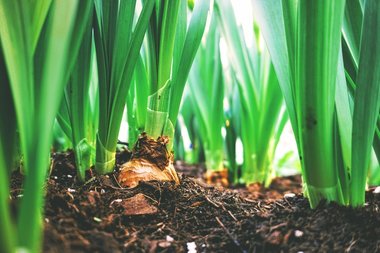With global population projected to reach 9.8 billion by 2050, meeting the growing demand for food represents one of the main challenges of our time. Considering the mostly negative impact of climate change and increasingly pronounced resource constraints, much will depend on the capacity of the agricultural sector to improve productivity, thus producing more with less. Smart farming might provide some of the answers to this challenge.
The productivity growth of European agriculture in the second half of the 20th century is responsible for making it possible to feed the continent’s growing population, improving food safety/availability and lowering prices for foodstuffs. In the face of an eroding resource base, environmental degradation and structural economic changes, this raises the question: will we be able to continue on this path in the 21st century? A briefing published by the European Commission in December 2016 with the title ‘Productivity in EU Agriculture - slowly but steadily growing’ looks into agricultural productivity levels in the EU over time using Total Factor Productivity (TFP). This indicator takes into account the ratio between agricultural output (production) and agricultural input (including intermediate inputs, land, labor and capital).
 The briefing highlights that agricultural productivity has increased in the EU over time. In specific, between 1995 and 2005, total TFP growth per annum remained above 1 percent. However, in recent years, there seems to have been a reduction in TFP growth, slowing down to 0.8%/annum between 2005 and 2015. When looking at the figures more closely, it becomes apparent that much of the productivity growth can be attributed to the EU-13 (i.e. the new member states), while the EU-15 have experienced a considerable drop in TFP growth per year (from 1.3% to 0.6%). This means the major European agricultural producing countries are moving towards stagnation, with Germany, the most populous EU member state, even recording negative TFP growth figures in recent years.
The briefing highlights that agricultural productivity has increased in the EU over time. In specific, between 1995 and 2005, total TFP growth per annum remained above 1 percent. However, in recent years, there seems to have been a reduction in TFP growth, slowing down to 0.8%/annum between 2005 and 2015. When looking at the figures more closely, it becomes apparent that much of the productivity growth can be attributed to the EU-13 (i.e. the new member states), while the EU-15 have experienced a considerable drop in TFP growth per year (from 1.3% to 0.6%). This means the major European agricultural producing countries are moving towards stagnation, with Germany, the most populous EU member state, even recording negative TFP growth figures in recent years.
The Commission points out that the slow growth of TFP over the last 10 years can be attributed mainly to the reduction in the number of people employed in the farming sector, thus making a rise in labor productivity the main driver of the modest increases in TFP. At the same time, investments have decreased, sparking fears in relation to the health of the agricultural sector in the EU and its capabilities to develop in the future. This means the European agricultural sector is experiencing both an exodus of its workforce, while recording a standstill in investments. In this context, the risks related to environmental sustainability issues, climate change (extreme heat waves, a reduction in rainfall, lower levels of water availability) and resource constraints/competition with other sectors cannot be underestimated.
Precision farming technologies have the potential to provide some of the answers to address the productivity challenge faced by the European farming sector. Take agricultural variability, for example: agricultural lands are characterized by differences in topography, soil composition, nutrient availability, climate conditions and moisture levels. Despite these differences, for a long time, farmers have followed a one-size-fits all approach when managing their holdings. Due to the growing impact of climate change, the level of agricultural variability has been increasing, potentially leading to reduced agricultural productivity, price spikes for certain crops, supply bottlenecks and unstable incomes. In response, researchers from Colorado State University have developed biodegradable miniature sensors the size of human fingernails that can be distributed on fields and used as a measuring tool towards more sustainable and efficient operations. Applying this digital technology, farmers can reduce input, improve yields and reduce losses.
If you would like to learn more about the application of miniature sensors in precision farming, follow this link.